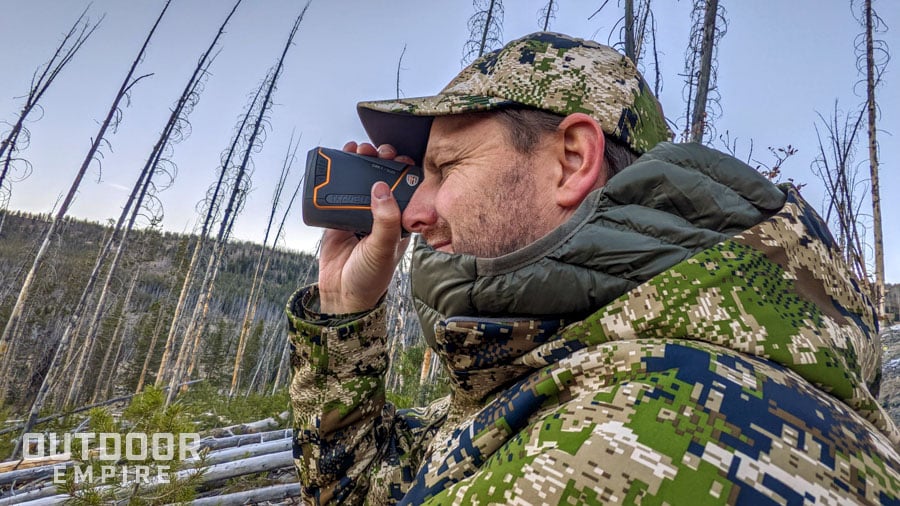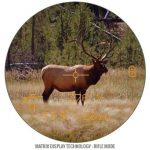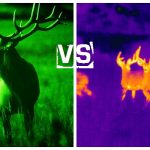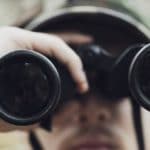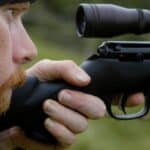Most rifle hunters associate the term rangefinder with Hollywood-esque long-distance shots like the Mark Wahlberg movie “Shooter.” If you’ve never used a rangefinder, you might think it’s only for absurdly long shots and that it has no place in an everyday hunter’s kit.
That assumption is wrong.
A rangefinder helps hunters by providing accurate distances to their target. Knowing your distance can boost confidence in your shot. Alternatively, it can let you know if you need to be closer before shooting. By removing the “guesstimation” part of your shooting process, a range finder gives you the accurate distance to the target.
Additionally, some more expensive models provide horizontal distance and wind readings down range.
However, there is more to rangefinders than this rudimentary explanation, and below, we cover who should use them, when to use them, and a few recommendations.
Who needs a range finder?
This ties into the next section, but bow and rifle hunters and long-distance shooters should invest in a range finder.
Bow Hunters
For bow hunters, there are different pins on your sight for corresponding distances. Though it is possible to eyeball at closer ranges, knowing the exact distance to your target can help you select the correct pin and make an accurate shot.
Rifle Hunters
Rifle hunting is similar. While hunters may have different zeros for their scope (point of aim/point of impact) at 36 yards, 50 yards, or 100 yards, many times shots are taken for big game far past the zero.
Though it is possible to range find using your scope (see the corresponding article), using a rangefinder is the most effective and accurate way to determine an exact distance to factor into your shooting.
As a rifle hunter shooting out to the distance, a range finder takes the guesswork out of target distances, making it easier to adjust the scope.
When to use a rangefinder?
Anytime you are shooting an unknown distance, whether with a bow or rifle, a rangefinder is an invaluable tool.
Good rangefinders can help you range and identify targets that exceed where you are comfortable shooting. This can help prevent your bullet from falling short.
Basic Rangefinder Features
At a minimum, your rangefinder should be able to accurately read the distance from you to the target.
More expensive models can include:
- Angel compensation, which is the ability to determine the horizontal distance from you to the target. This plays a major role when shooting in steep or mountainous terrain.
- Larger objective lenses or higher-end glass optics.
- Better ruggedization to protect it from the elements.
- Additional in-display, ballistic-compensated measurements.
- Bluetooth for connectivity with ballistics apps on smartphones or special riflescopes.
- Additional sensors, such as thermometers and barometers.
- Reading wind using a laser to detect dust in order to determine wind speeds.
Our Rangefinder Recommendations
Upgrade Pick: Maven RF.1
Best for the Money: Leupold RX-1400i
Budget Pick: AOFAR HX-1200T (affiliate link, FYI)

